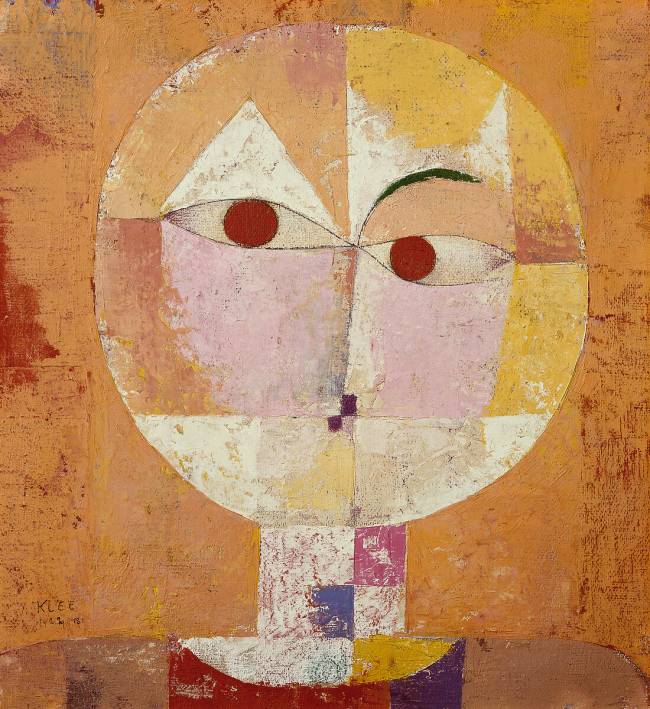Shop art print and framed art Senecio, 1922 by Paul Klee
Customise
Your art print
Senecio, 1922 OF Paul Klee
Senecio, 1922
Senecio, 1922: the iconic work of Paul Klee
In the world of twentieth-century painting, Paul Klee is unquestionably a major figure. A Swiss artist of German origin, he marked his era with his varied and innovative works. Among these, "Senecio", produced in 1922, stands out as one of the most famous and representative of his style. In this article, we take a look at this fascinating work through its technical characteristics, the context in which it was created and its place in Paul Klee's artistic development.
An innovative technique: watercolour on paper mounted on cardboard
Senecio, which means "old man" in Latin, is a watercolour painting on paper mounted on cardboard. This original technique allows the artist to work with precision on the details of his painting while retaining a light, airy aspect characteristic of watercolour. The dimensions of the work, 40 x 37.5 cm, also offer an intimate format conducive to contemplation.
The use of geometric shapes
The portrait of this old man is constructed from simple geometric shapes: circles, triangles, rectangles and straight lines intertwine to bring this mysterious figure to life. The outlines of these shapes are emphasised by strong black lines, which contrast with the bright colours used to fill the spaces.
A bold play of colour
colours play a central role in Paul Klee's work and Senecio is no exception. The warm hues of the face (yellow, orange, red) blend into the orange-red background, while darker shades accentuate the details. This bold use of colour, typical of the artist, gives this portrait an expressive and emotional dimension.
The creative context: a prosperous period for Paul Klee
Senecio was created in 1922, when Paul Klee was a member of an influential group of twentieth-century artists called "Die Blaue Vier" (the Blue Four), alongside Vassily Kandinsky, Alexej von Jawlensky and Lyonel Feininger. The group aimed to promote abstract and non-figurative art by organising international exhibitions and encouraging the production of innovative works.
International recognition
In the early 1920s, Paul Klee's reputation grew rapidly and he was invited to exhibit his work in numerous galleries across Europe. In 1922, he notably took part in the famous "Erste Russische Kunstausstellung" (First Russian Art Exhibition) in Berlin, where Senecio was presented to the public for the first time. This exhibition helped establish his reputation as an innovative and avant-garde artist.
Paul Klee's artistic development through Senecio
Senecio represents an important milestone in Paul Klee's creative journey, marking an evolution towards a more geometric and abstract style. This shift is partly explained by his growing interest in the theories of non-figurative art, as well as his teaching at the Bauhaus school from 1921.
The influence of the Cubist movement
The portrait of Senecio bears similarities to certain works of the Cubist movement, particularly those by Pablo Picasso and Georges Braque. Indeed, the geometric shapes that make up the face are reminiscent of the deconstructions and recompositions characteristic of Cubism. However, unlike the cubists who sought to represent all the facets of a subject simultaneously, Paul Klee concentrates on a single frontal perspective to create this enigmatic work.
An emblematic work of abstract art
Although depicting a human face, Senecio can be considered a work of abstract art due to its geometric composition and the lack of realism in the representation of the subject. The viewer is thus invited to interpret the portrait freely, appealing to his or her imagination and emotions rather than an objective vision of reality.
A lasting legacy
Today, Senecio remains a centrepiece of Paul Klee's work and continues to inspire many contemporary artists. His influence can be felt particularly in the fields of graphic design, illustration and fashion. The success and durability of this painting testify to Paul Klee's importance in the history of modern art.
This artwork is a painting from the modern period. It belongs to the abstract art style.
« Senecio, 1922 » is kept at Kunstmuseum, Basel, Switzerland.
Find the full description of Senecio, 1922 by Paul Klee on Wikipedia.



































